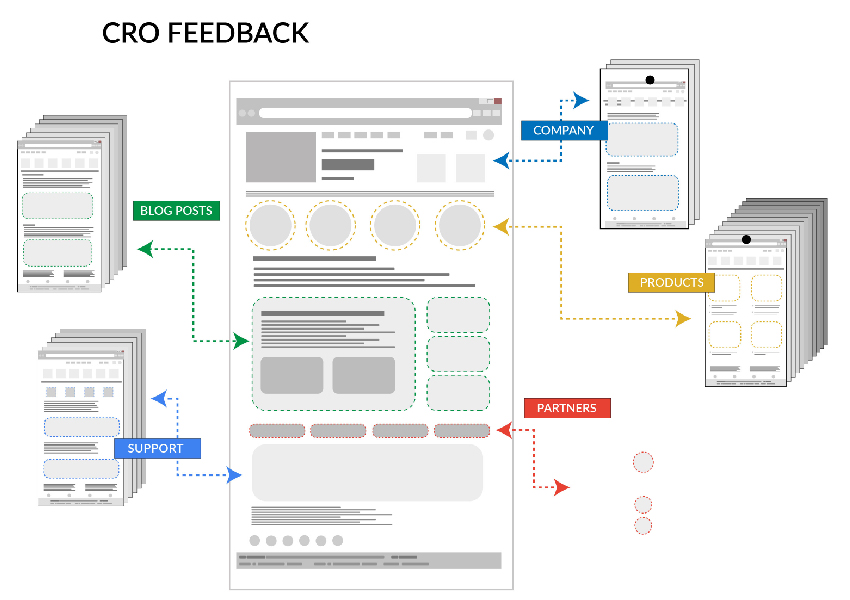Why CRO Feedback? Why now?
Search campaigns benefit from high-performance landing pages. Search campaign CRO (conversion rate optimization) feedback can lead to improved landing page conversion performance. We use Google Analytics 4 (GA4) metrics and Heatmapping analysis to study traffic flows and engagement on your site, and won’t suggest changes unless there is data behind our recommendations.
We provide clients with CRO feedback shortly after the start of development because it gives them time to make suggested changes before ad campaigns launch.
Search Ad Landing Pages Serve Low-Funnel Traffic
Landing pages for search ad campaigns have a different role to play as compared to landing pages for display, shopping, and video campaigns.
Their task is to convert low-funnel, or warm traffic into conversions. Search ad landing pages are guiding traffic to directly take an action to engage with your business.
Our CRO feedback will therefore be different than feedback for display, shopping, or video campaigns.
Typical changes we might suggest for search landing pages might include:
- Changing the placement or flow of content.
- Transforming long “walls” (blocks) of text into bullet lists.
- Simplifying forms to increase the likelihood of conversion.
- Strengthening the central value proposition and features/benefits.
In some cases, we will create wireframe diagrams as our inputs on suggested changes to landing pages.
The Nature Of Traffic Arriving From A Search Ad Click
Because of their placement on search engine result pages, search ads are shown to traffic with and expressed search intent that leads them to your product or service. Typically, this traffic has engaged by looking at multiple ads, selecting your ad clicking, bringing the prospective customer/client’s attention onto your landing page. This class of traffic has a higher probability of being close to taking action to engage with your business.
What A Search Ad Landing Page Needs To Do
The search ad landing page should serve this traffic with summary information about the benefits and features available, resolving all the most common sales objections. It should also provide ways to obtain more information should the landing page not address them (customer chat, detailed spec pages, articles).
Search traffic leads are potential new customers who are likely somewhat familiar with offerings from your competitors. A good search traffic landing page will show them why your particular business is the best one to select, by clarifying and strengthening the value proposition.
“Social Proof” can be used, but more selectively on a search traffic landing page. This might consist of a strong guarantee statement, testimonials, certifications, reseller endorsements, and the like.
The call to action should communicate clearly what the user is committing to, what will happen next, and when relevant, privacy policy.
Handle Search Traffic With Diligence
Search ad traffic is relatively expensive because it is more likely to convert. Search ad landing pages should be carefully tailored to suit this class of traffic. Information about the product or service should answer the most common questions customers are likely to have and reinforce that with social proof. Calls to action should be confident and concise.

